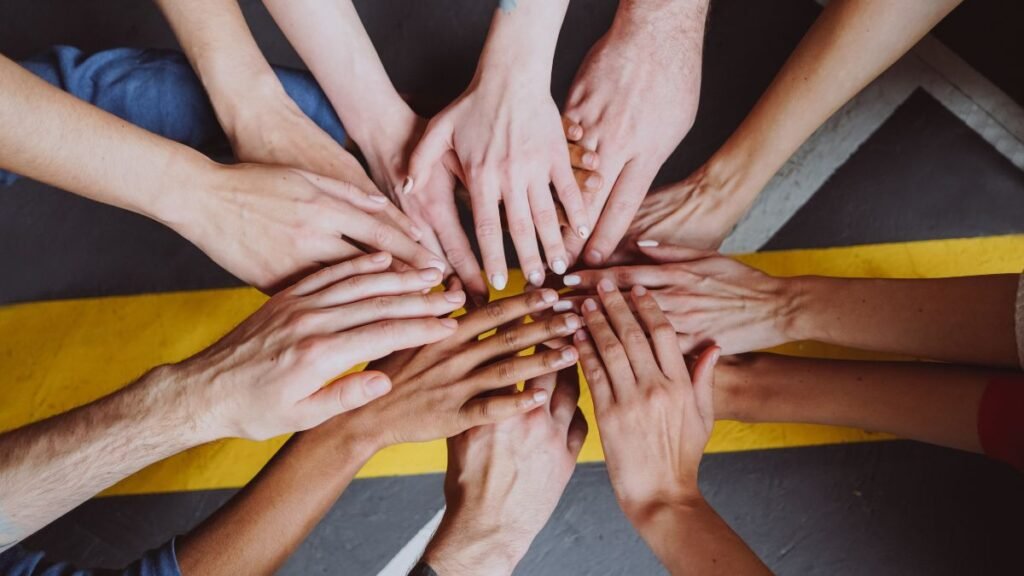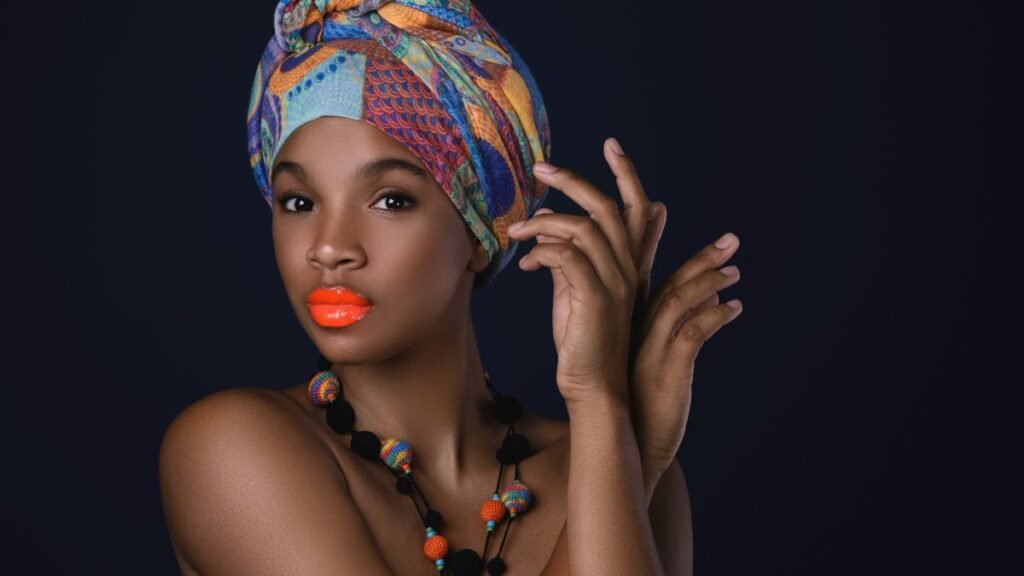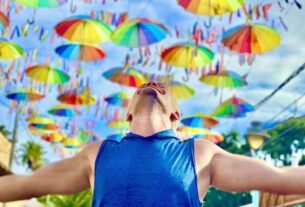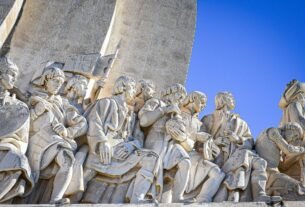Introduction
Did you know that one country can hold the cultural richness of nearly every continent? From Indigenous roots to global influences, Brazil stands as a living mosaic of traditions, languages, and identities.
This vibrant nation is a tapestry woven from the threads of its Indigenous peoples, who have inhabited the land for thousands of years, and the waves of European settlers, African slaves, and more recent immigrants from Asia and the Middle East.
Each group has contributed unique customs, culinary delights, and artistic expressions that enrich Brazil’s cultural landscape, showcasing the incredible Brazil diversity.

Over 500 years of blending between native people, European settlers, African descendants, and immigrants created a society where mixed heritage thrives. Today, nearly half the population identifies as multiracial, a testament to the unique fusion of its heritage.
Regional contrasts add depth. The Northeast pulses with African rhythms, while the South reflects European traditions. Even São Paulo hosts the largest Japanese community outside Japan. With 274 Indigenous languages still spoken, Brazil’s diversity defies simple labels.
Key Takeaways
- Nearly half of the population identifies as mixed-race, reflecting centuries of cultural blending.
- Regional differences create distinct identities, from African-influenced Northeast to European-rooted South.
- Over 274 Indigenous languages are still spoken alongside Portuguese.
- São Paulo has the highest ethnic Japanese population outside Japan.
- Recent census data shows significant growth in Black and multiracial communities.
Introduction to Brazil’s Multicultural Identity
A tapestry of ethnicities shapes society here, from Indigenous roots to global influences. With 203 million people, nearly half (45.3%) identify as mixed-race, a testament to centuries of blending. Whites comprise 43.5%, Blacks 10.2%, and Indigenous groups 0.8%, per 2022 data.
The term *pardo*, officially used in censuses, captures the fluidity of racial identity. Unlike rigid classifications elsewhere, locals recognize 68 color categories. Yet, the “racial democracy” ideal faces challenges. Socioeconomic gaps persist between groups, especially in education access.
Cultural fusion thrives in traditions like Candomblé, which merges Yoruba and Catholic rituals. The Northeast preserves Africa’s legacy the strongest, with a 13% Black population. Meanwhile, 87% live in coastal cities, creating urban melting pots starkly different from rural areas.
Immigration Waves That Shaped Demographics
| Group | 19th-20th Century Arrivals | Cultural Impact |
|---|---|---|
| Portuguese | 2.25 million | Language, architecture |
| Italians | 1.5 million | Cuisine, festivals |
| Spaniards | 700,000 | Music, regional dialects |
Today, movements reclaim Indigenous and African heritage, driving development in education reforms. These efforts aim to bridge historical inequalities, ensuring all groups share in the nation’s progress.
Historical Roots of Brazil’s Diversity
Long before colonial ships arrived, thriving indigenous peoples shaped the land. The Tupi-Guarani nations dominated coastal regions with advanced farming systems. By 1500, their population reached 2.5 million, until European contact altered everything.
Indigenous Peoples and Early Settlers
Portuguese explorers established the first colony in 1532, triggering devastation. Bandeirante expeditions enslaved natives and spread diseases, reducing populations by 90% within a few years. Jesuit missions later intervened, preserving some groups while suppressing native religions.
The Impact of Portuguese Colonization
The sugar boom (1530–1700) cemented racial hierarchies. A 1755 decree encouraged mixed marriages to control territory, blending European and Indigenous cultures. Later, gold rushes intensified slave trafficking from the Northeast to Minas Gerais.
| Colonial Period | Key Event | Legacy |
|---|---|---|
| 1500–1532 | First Indigenous contact | Population collapse |
| 1530–1700 | Sugar plantations | Racial caste system |
| 1693–1800 | Gold cycle | Internal slave trade |
African Slavery and Its Legacy
Between 1501 and 1866, 4.9 million Africans were forcibly brought in. Quilombos, such as Palmares, which sheltered 30,000 escaped slaves, became symbols of resistance. Abolition in 1888 left 750,000 freed people without reparations, yet their cultural contributions endure:
- Capoeira: Martial art disguised as dance
- Feijoada: National dish with African roots
- Samba: Rhythms born from enslaved communities
These historical layers reveal how oppression and resilience forged today’s multicultural identity.
Waves of Immigration: Shaping Modern Brazil
Labor shortages after abolition sparked one of the largest migration waves in modern history. Between 1888 and 1914, over 2 million Europeans and Asians arrived, filling gaps in coffee plantations and urban industries. This “Great Immigration” redefined demographics, leaving lasting marks on culture, economy, and even cityscapes.
European Immigration (19th–20th Centuries)
Italy sent the largest groups, with 1.5 million settling in São Paulo’s coffee belt. Their legacy thrives in Bixiga’s cantinas and the annual Festa di San Vito. Germans, meanwhile, clustered in Santa Catarina, where half the population still speaks dialects like Hunsrückisch.
Japanese and Middle Eastern Contributions
By 1940, Japan had sent 170,000 immigrants, creating the world’s largest Nikkei community outside Japan. Today, their influence spans from shoyu-infused cuisine to J-pop festivals. Syrian-Lebanese arrivals, although smaller in number (700,000), dominated the textile trade and introduced dishes like esfiha.
Recent Migration Trends
New regions now shape the story. Over 261,000 Venezuelans have fled the crisis since 2023, while Haitians (143,000 since 2010) have also worked in construction. São Paulo’s Bom Retiro district reflects new trends, with Koreans operating 80% of the electronics shops.
| Immigrant Group | Key Contribution | Modern Presence |
|---|---|---|
| Italians | Vineyards, architecture | 30M descendants |
| Japanese | Agriculture, tech | 2.1M Nikkei |
| Syrian-Lebanese | Urban commerce | 10M+ descendants |
These layers of migration prove that diversity isn’t static; it’s a living, evolving force. From 19th-century policies to today’s border crises, each wave adds another thread to the national fabric.
Brazil’s Racial and Ethnic Composition Today
Recent census data highlights evolving racial and ethnic patterns. The 2022 survey reveals a total population of 203 million, with 45.3% identifying as mixed-race (*pardo*), 43.5% as white, and 10.2% as Black. Indigenous groups account for 0.8%, while Asian communities represent smaller but culturally significant clusters.
White, Black, and Mixed-Race Populations
Self-identification shifts are reshaping demographics. Nearly 32% of respondents changed their racial categories between 2010 and 2022, reflecting fluid perceptions of identity. The *pardo* majority now dominates 58.3% of municipalities, while regional gaps persist:
| Region | Dominant Group | Percentage |
|---|---|---|
| North | Mixed-race | 67.2% |
| South | White | 72.6% |
| Northeast | Black | 13.0% |
Economic disparities remain stark. White citizens earn 74% more than their Black counterparts, despite affirmative action policies reserving 50% of university seats for marginalized groups since 2012.
Indigenous and Asian Communities
Indigenous populations are concentrated in Amazonas (12.5%) and Roraima (15.4%). Movements have secured land protections for 13% of the national territory. Meanwhile, Asian descendants, though just 1.2% of the Brazilian population, cluster in São Paulo. Their aging demographics signal future cultural shifts.
DNA studies reveal the average citizen’s ancestry as 60% European, 25% African, and 15% Indigenous. These numbers underscore a legacy of blending, one that continues to redefine the nation’s identity.
Regional Diversity: A Closer Look
Each state tells a unique story through its demographics and traditions. From the Amazon’s Indigenous hubs to São Paulo’s skyscrapers, geographic contrasts shape lifestyles. These differences reveal how history and migration forged distinct identities.
North vs. South: Contrasting Demographics
The North has a 67.2% mixed-race distribution, while the South has a 72.6% white population. Amazonas exemplifies this blend, with 68.8% mixed-race and 12.5% Indigenous populations. Southern Rio Grande do Sul, however, reflects a mix of German and Italian roots, with 78.4% identifying as white.
The Northeast’s African Influence
Bahia’s Pelourinho district pulses with Yoruba traditions in Candomblé temples. Dishes like acarajé (black-eyed pea fritters) have their roots in West Africa. Maranhão’s Tambor de Crioula dance preserves Bantu rhythms, a living tribute to resilience.
Southeast’s Urban Melting Pot
São Paulo’s Liberdade district is home to the largest Japanese diaspora outside Japan. Meanwhile, the region’s economic pull draws millions from the Northeast. This mix creates dynamic hubs where global and local cultures collide daily.
| Region | Cultural Highlight | Population Trend |
|---|---|---|
| North | Indigenous-Portuguese Carimbó music | 68.8% mixed-race |
| South | Oktoberfest in Blumenau (1M+ visitors) | 72.6% white |
| Northeast | African-derived acarajé cuisine | 59.6% mixed-race |
Cultural Expressions of Brazil Diversity
From pulsating rhythms to vibrant festivals, cultural expressions here weave a rich tapestry of traditions. Over 280 Indigenous languages and 17 UNESCO-recognized heritage elements showcase this living culture. These manifestations reveal how different groups have shaped daily life through music, food, and celebrations.
Rhythms That Move a Nation
Samba emerged from Angolan semba and Bahian drum circles, now symbolizing national identity in Brazil. In the Northeast, maracatu preserves Kongo kingdom coronation rituals with thunderous percussion. Meanwhile, forró accordion melodies reflect the influence of European migrants in rural areas.
Flavors Without Borders
Japanese-Brazilian fusion has birthed innovations like tempura-style moqueca, a fish stew. São Paulo consumes 1 million pizzas daily, while Arab esfihas outsell burgers in some cities. This culinary production turns kitchens into cultural laboratories.
Celebrations That Unite
The Bumba Meu Boi festival merges Indigenous, African, and Iberian folklore into colorful parades. German-derived Oktoberfest generates R$1.4 billion annually in Blumenau. Even Carnival costumes now incorporate Indigenous body painting techniques.
| Cultural Element | Origin Groups | Modern Impact |
|---|---|---|
| Samba | African, Indigenous | National symbol |
| Feijoada | African, Portuguese | National dish |
| Oktoberfest | German immigrants | Major tourism event |
These living traditions prove how culture evolves through creative adaptation. From street performances to family recipes, every expression tells a story of resilience and reinvention.
Language and Religion in Brazil
Words and worship reveal the nation’s complex identity. While Portuguese unites 99.5% of the population, regional twists and spiritual blends paint a vivid picture of cultural fusion. This linguistic and religious landscape reflects centuries of adaptation and resilience.
Portuguese with Regional Twists
Indigenous languages are reclaiming space, too. Fifteen municipalities now recognize native tongues in official education systems. The 2010 census recorded 274 surviving Indigenous languages, though 190 face extinction risks.
Religious Syncretism
Faith here defies simple categorization. Umbanda temples blend Catholic saints with African orishas and Spiritist teachings. In Salvador, Candomblé ceremonies preserve Yoruba chants unchanged for generations. Meanwhile, Japanese-Brazilians maintain 150 Buddhist temples alongside Shinto-Bantu hybrid practices.
| Religious Group | Percentage | Cultural Markers |
|---|---|---|
| Catholic | 64% | Festas Juninas, church architecture |
| Protestant/Evangelical | 22% | Pentecostal growth in favelas |
| Afro-Brazilian religions | 2% | Candomblé, Capoeira rituals |
Rio’s favelas exhibit striking shifts, with 42% now identifying as Evangelical. Yet ancient traditions persist. The Amazonian Jewish community still sings Ladino prayers from 19th-century Moroccan ancestors. This spiritual mosaic continues to evolve while honoring its roots.
Language and faith intertwine in daily life. From classroom bilingual programs to temple ceremonies, these elements shape identity. They prove how cultures adapt without losing their essence—a lesson in harmonious coexistence.
The Role of Afro-Brazilian Culture
African heritage pulses through the nation’s cultural heartbeat, shaping traditions that endure centuries. With 56% of the population tracing their African ancestry, these influences are evident in music, spirituality, and social movements.
Capoeira and Candomblé: Acts of Resilience
Rooted in a complex history of resistance, Capoeira disguised combat training as dance during the era of slavery. Today, it’s a global phenomenon that blends acrobatics with rhythmic berimbau melodies.
Candomblé, practiced by 1.3 million, preserves Yoruba orisha worship. Over 1,200 terreiros (temples) operate nationwide, with a 92% preservation rate in Bahia.
Quilombos and Modern Advocacy
Descendants of quilombos, maroon communities like Palmares, now inhabit 1,700 recognized territories. These groups safeguard traditions while fighting for land rights.
- Black Consciousness Day (November 20) honors Zumbi dos Palmares, symbolizing the ongoing struggles of the African diaspora.
- Museu Afro Brasil in São Paulo houses 35,000 artifacts, from sacred masks to samba costumes.
- Black women’s political representation has grown by 54% since 2016, the highest rate among marginalized groups.
Indigenous Heritage and Modern Challenges
Across vast rainforests and urban centers, Indigenous communities uphold traditions while facing pressing threats. With 305 distinct ethnic groups and 274 languages still spoken, these indigenous people represent a living cultural legacy. Yet their survival hangs in the balance, caught between environmental destruction and hard-won legal protections.

Survival Against All Odds
The Yanomami crisis exposed brutal realities. Between 2019 and 2022, illegal gold mining poisoned rivers, leading to 570 child deaths from malnutrition and disease. Meanwhile, the Guarani-Kaiowá in Mato Grosso do Sul fight for ancestral lands now occupied by agribusiness.
Innovation meets tradition in preservation efforts:
- Tembé tribes created digital archives of their endangered language
- Amazonian groups use GPS drones to track illegal loggers
- Kayapó warriors launch viral TikTok campaigns against hydroelectric dams
Legal Battles and Partnerships
Article 231 of Brazil’s Constitution guarantees Indigenous land rights, yet enforcement remains inconsistent. The National Indian Foundation (FUNAI) saw 75% budget cuts under recent administrations, weakening protections.
Some state-backed initiatives show promise:
| Initiative | Impact |
|---|---|
| Suzano Papel partnership | Xingu tribes manage 50,000 acres of sustainable eucalyptus |
| Urban Indigenous programs | Supports 46% of native population now living in cities |
These efforts prove that respecting Indigenous information systems, from forest management to medicinal knowledge, benefits all. As climate change accelerates, their stewardship becomes ever more vital.
Asian Influence in Brazil
Asian cultural footprints run deep across this vibrant nation, shaping everything from street food to tech startups. Over 2.3 million people claim Asian ancestry, with Japanese-Brazilians forming the largest community outside Asia itself. Their legacy, alongside Chinese, Korean, and Vietnamese contributions, has quietly reshaped the country’s economic and cultural landscape.
Japanese-Brazilian Communities
Liberdade district stands as a living monument to Japanese immigration. With over 600,000 Nikkei residents, it’s the center of the biggest Japanese immigrant population outside Japan. Red torii gates mark streets where shops sell matcha alongside cafezinho.
Early 20th-century arrivals transformed agriculture. They introduced organized farming techniques that boosted pepper production by 300% in São Paulo. Over time, their influence expanded to:
- Brazilian jiu-jitsu—a local adaptation of judo
- Okinawan language classes in Campo Grande schools
- Annual Tanabata festivals attracting 200,000 visitors
Other Asian Contributions
Chinese investment topped $66 billion in energy and mining sectors from 2010-2020. Meanwhile, Korean entrepreneurs dominate São Paulo’s electronics sector, and approximately 80% of the shops in the Bom Retiro district are Korean-owned.
Less visible but equally vital impacts include:
- Vietnamese nail salons hold a 42% market share in urban beauty services
- Taiwanese semiconductor plants in Campinas tech hub
- 43% growth in sushi restaurants since 2000
| Group | Population | Key Industries |
|---|---|---|
| Japanese | 2.1 million | Agriculture, manufacturing |
| Chinese | 250,000 | Energy, mining |
| Korean | 50,000 | Electronics, textiles |
This fusion extends to spirituality as well. Buddhist temples incorporate Afro-Brazilian drumming, showing how immigrant groups adapt while preserving cultural values. From farm tools to smartphone chips, Asian ingenuity continues redefining possibilities.
Demographic Shifts Over Time
Population trends paint a vivid picture of evolving identities. From colonial settlements to megacities, changes in numbers reflect deeper social transformations. The total population has surged from 17 million in 1900 to 203 million today, with 87% of the population now urbanized.
From Colonial Times to Present
Mixed-race populations have grown from 38% in 1872 to 45.3% today, reflecting centuries of blending. Life expectancy doubled from 50 to 76 years, while fertility rates dropped sharply from 6.1 to 1.6 children per woman.
Key migration waves reshaped demographics:
- 10 million Northeasterners moved Southeast since 1950
- 330,000 Japanese-Brazilians returned to Japan
- Urban favelas now house 11 million diverse residents
Urbanization and Its Effects
Between 1950 and 2000, 31 million people left rural areas, creating new cultural hubs. Cities became melting pots where Northeast traditions meet Southern European influences.
Modern challenges emerge from these shifts:
| Trend | Impact |
|---|---|
| Aging population (10.9% over 65) | Healthcare system strain |
| Gender imbalances | 103 Black men per 100 women vs 89 Asian men |
These changes position the country uniquely in the world demographic landscape. Understanding them helps predict future social and economic developments.
Brazil’s Multicultural Cities
Urban landscapes here serve as living museums of cultural fusion. Skylines tell stories through architectural styles, colonial churches beside Japanese pagodas. Neighborhoods become time capsules preserving traditions from across oceans.

São Paulo: A Global Hub
With 1.2 million Japanese descendants, São Paulo hosts the largest diaspora outside Japan. The city’s 3,000+ restaurants serve 52 cuisines—from Syrian esfihas to Amazonian tacacá soup.
Key districts showcase this blend:
- Bixiga’s Italian trattorias sit minutes from Bom Retiro’s Korean signage
- Paulista Avenue mixes Korean churches with Lebanese bakeries
- 500,000 Bolivians maintain textile workshops in Brás
Rio de Janeiro’s Cultural Mosaic
In Rio de Janeiro, 825,000 Black residents preserve African heritage. The Saúde neighborhood’s “Little Africa” zone pays homage to samba’s roots with live rodas daily. Rocinha favela mirrors national diversity, its 70,000 residents hail from all 26 states.
Cultural fusion appears in unexpected places:
- Municipal Theater blends Amazonian featherwork with European opera
- 28 urban quilombos maintain traditions in metropolitan areas
- Carnival floats incorporate Indigenous body painting techniques
| City | Cultural Highlight | Demographic Data |
|---|---|---|
| São Paulo | Liberdade district’s Japanese centennial park | 52% mixed-race population |
| Rio de Janeiro | Pedra do Sal samba birthplace | 47% Black or mixed-race |
Education and Social Mobility
Progress in education systems reveals both strides and gaps in equal opportunity. Over the past two decades, policy reforms have significantly reshaped access to education across racial and socioeconomic lines. The results show promising shifts in who gets to walk through university gates.
Breaking Barriers in Higher Education
The 2012 Law of Social Quotas marked a turning point. It reserves 50% of federal university seats for public school students, with priority for Black, mixed-race, and Indigenous applicants. Since implementation:
- Black university enrollment jumped 400%
- Indigenous entrants rose from 5,000 to 57,000
- 82% of quota graduates secure employment within a year
Racial literacy programs now reach 8,000+ schools. These initiatives teach Afro-Brazilian history alongside standard curricula. The rate of Black entrepreneurship consequently grew 28% between 2015 and 2022.
Ongoing Challenges
Despite progress, disparities persist. The digital divide reveals that 42% of favela residents lack internet access, compared to 18% nationally. Corporate diversity metrics reveal that Black women earn 44% less than their white male peers.
Professional training targets quilombola youth with vocational courses. Over 92% of major companies now track diversity data, though implementation varies. These efforts aim to close gaps in information access and economic mobility.
| Initiative | Impact |
|---|---|
| University quotas | 43% of federal students now from marginalized groups |
| Digital inclusion | 12% increase in favela internet access (2018-2022) |
As reforms continue, the focus shifts from access to quality. Equal opportunity requires not just open doors, but the tools to walk through them successfully.
Brazil’s Multicultural Future
The next chapter of cultural evolution is being written by young innovators. With 25% of the population under 15 and 35% of millennials embracing fluid identities, traditional labels are becoming increasingly obsolete. This transformation blends heritage with global influences, creating dynamic new expressions.
Youth and Changing Identities
Gen Z leads the Pretos Pardos movement, reclaiming mixed heritage with pride. Social media amplifies their voice, and Indigenous TikTok creators now have over 10 million followers. Afro-futurism exhibitions reimagine identity through art, while LGBTQ+ Carnival blocks promote intersectional visibility.
Food culture evolves, too. Vegan chefs adapt traditional feijoada using jackfruit instead of pork. These changes reflect deeper shifts:
- 82% of urban youth identify with multiple cultural influences
- K-Pop blends with funk and carioca music styles
- Climate migration creates new Amazonian cultural hubs
Globalization’s Impact
International connections accelerate change. The digital nomad visa attracts 25k+ remote workers annually, bringing new perspectives. Chinese tech investments drive smart city development in major metros.
Economic shifts follow cultural ones:
| Trend | Economic Impact | Timeframe |
|---|---|---|
| Tech investments | $3.2B annual growth | 2020–2025 |
| Creative industries | 12% employment rise | 2018–2023 |
These transformations demonstrate how groups adapt traditions while shaping the future. The future belongs to those who embrace complexity without forgetting origins.
Conclusion: Celebrating Brazil’s Unique Diversity
Cultural fusion isn’t just a concept here; it’s daily life. With 45.3% of its population being mixed-race, this country showcases how traditions blend seamlessly. From UNESCO-recognized heritage to grassroots innovations, coexistence fuels creativity.
Challenges remain in achieving equity, but demographic shifts signal progress. By 2040, mixed-race groups may comprise 55% of the population, reshaping industries and the arts. Global societies can learn from this living laboratory.
Travelers play a role, too. Supporting local communities preserves authenticity while driving inclusive development. The future belongs to those who honor roots while embracing change. Learn more Brazil Culture
FAQ
What are the main ethnic groups in Brazil?
The population includes White, Black, mixed-race (Pardo), Indigenous, and Asian communities, reflecting centuries of migration and cultural blending.
How did African slavery shape Brazilian culture?
Enslaved Africans brought traditions like samba, capoeira, and Candomblé, which remain central to the nation’s identity today.
Which regions have the strongest African influence?
The Northeast, particularly Bahia, is known for its Afro-Brazilian heritage, seen in music, cuisine, and religious practices.
How significant is the Japanese community in Brazil?
Brazil hosts the largest Japanese diaspora outside of Japan, with significant cultural contributions to São Paulo’s cuisine, festivals, and arts.
What languages are spoken besides Portuguese?
Indigenous languages, as well as German, Italian, and Japanese, are spoken in some communities, although Portuguese is the official language.
How does regional diversity affect traditions?
From the Amazon’s Indigenous rituals to the Southeast’s urban fusion, customs vary widely by geography and history.
What challenges do Indigenous peoples face today?
Land rights, deforestation, and cultural preservation remain critical issues for Native communities.
How has immigration changed in recent years?
New waves from Venezuela, Haiti, and West Africa add to the multicultural mix, especially in cities like São Paulo.
What role does religion play in cultural diversity?
Syncretism blends Catholicism, Afro-Brazilian religions, and Spiritism, resulting in unique spiritual practices throughout the country.




